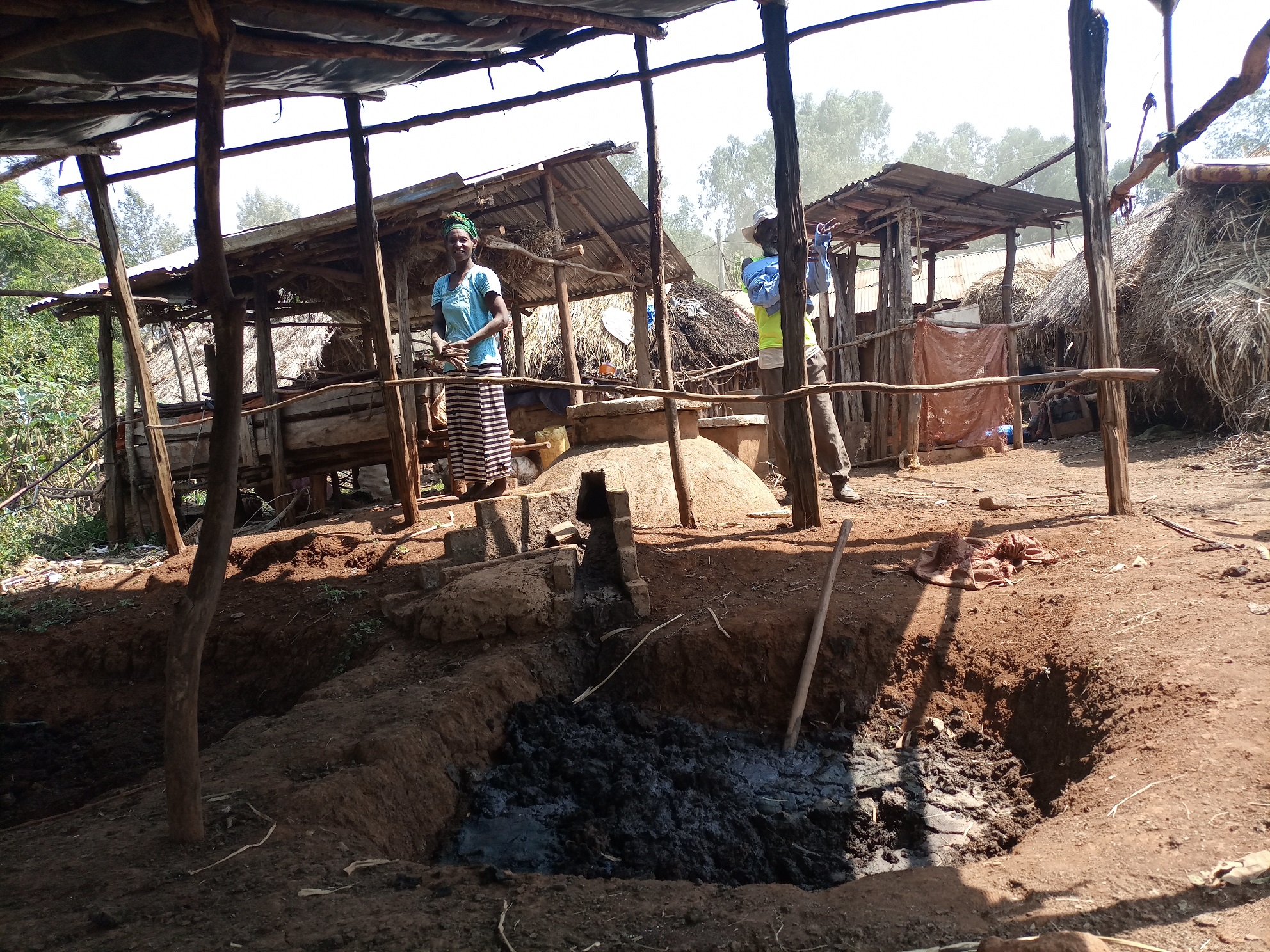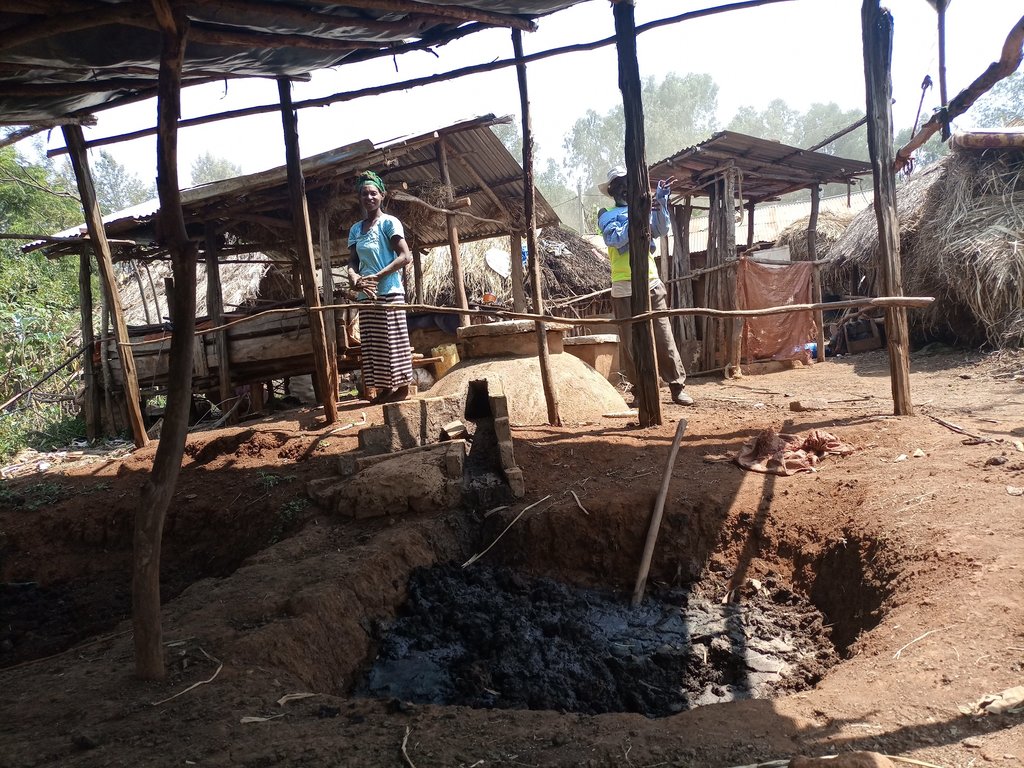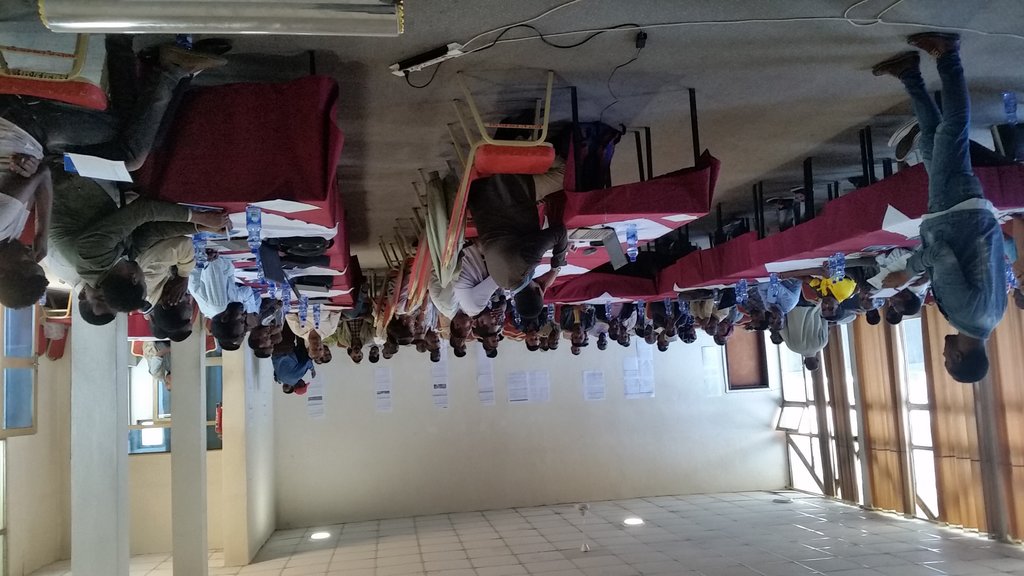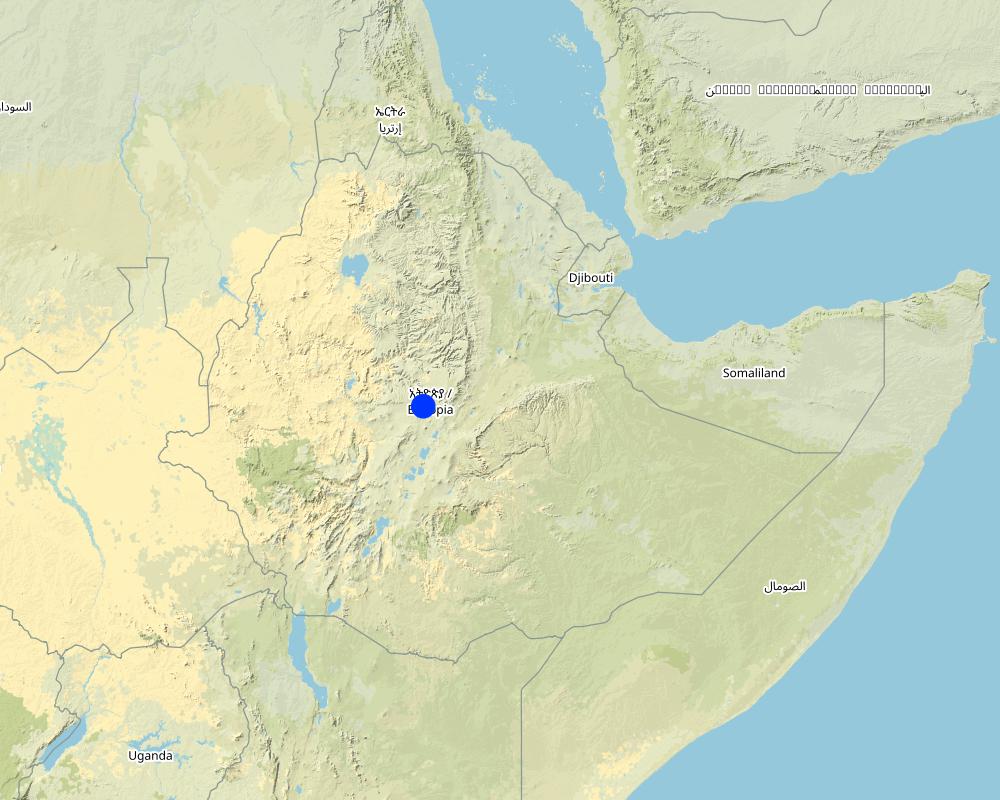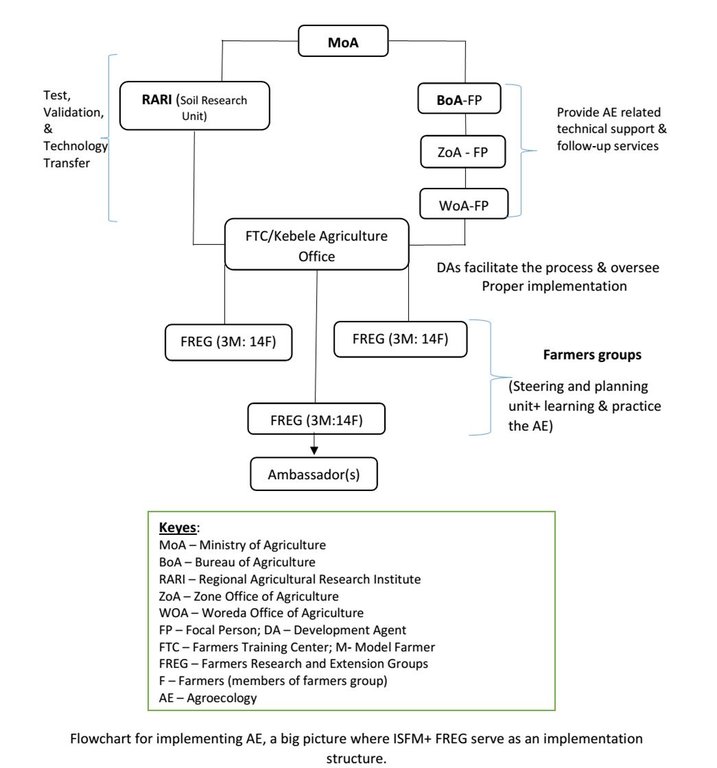Integrated Soil Fertility Management (ISFM) [Ethiopia]
- Creation:
- Update:
- Compiler: GERBA LETA
- Editors: Noel Templer, Julia Doldt, Torben Helbig
- Reviewers: William Critchley, Rima Mekdaschi Studer
Qindoomina Misooma Gabbina Biyyee (Afaan Oromoo) /Yeteqenaje ye Afer Limat (Amharic)
approaches_6732 - Ethiopia
View sections
Expand all Collapse all1. General information
1.2 Contact details of resource persons and institutions involved in the assessment and documentation of the Approach
Name of project which facilitated the documentation/ evaluation of the Approach (if relevant)
Soil protection and rehabilitation for food security (ProSo(i)l)Name of the institution(s) which facilitated the documentation/ evaluation of the Approach (if relevant)
Alliance Bioversity and International Center for Tropical Agriculture (Alliance Bioversity-CIAT) - Kenya1.3 Conditions regarding the use of data documented through WOCAT
When were the data compiled (in the field)?
07/02/2023
The compiler and key resource person(s) accept the conditions regarding the use of data documented through WOCAT:
Yes
1.4 Reference(s) to Questionnaire(s) on SLM Technologies
2. Description of the SLM Approach
2.1 Short description of the Approach
The Integrated Soil Fertility Management (ISFM) approach has been adopted under the Integrated Soil Fertility Management Project (ISFM+). It was introduced as a quick-win solution to increase both crop and biomass production through the incremental promotion of varied but complementary technology packages.
2.2 Detailed description of the Approach
Detailed description of the Approach:
The Integrated Soil Fertility Management (ISFM) approach is intended to increase both crop and biomass production through the incremental promotion of varied but complementary technology packages. These include the production and use of organic fertilizers, treatment of soil acidity, and improved retention of crop residue. All help in reducing the depletion (mining) of soil nutrients. One characteristic feature is the engagement of research and development partners at all levels such as in joint problem identification, learning, participatory planning, piloting technology, and exchange visits. The approach involves model farmers and also focuses on farmers with limited means to purchase chemical fertilizers. It enhances the production of organic fertilizers to increase both soil fertility and crop productivity. Furthermore, ISFM enables farmers to generate off-farm and on-farm income through the production and sale of organic fertilizers, vermiworms, and green manure seeds, etc. The partners assist in identifying soil-related issues, as well as enhancing the adoption and institutionalization of the approach. ISFM aims to improve stakeholders' understanding of land degradation issues and the necessity of SLM by creating access to relevant seasonal training, exposure visits, collective learning, and action.
Project focal persons representing partners at different levels and development agents (DAs) are used to facilitate the process and serve as potential links with stakeholders. At the local level, the Farmers Research and Extension Group (FREG) sub-approach supports the implementation of the technologies on an incremental basis (see WOCAT database). Also, the Soil Fertility Improvement Cluster approach (see WOCAT database) assists in scaling out of the ISFM approach by adopting and superimposing technologies such as vermicompost with improved compost production. Farmer ambassadors are identified from the FREG model based on their performance. They assist in mainstreaming and dissemination of the approach and technologies to indirect beneficiaries. The implementation process of the ISFM involves district and kebele selection, identification of watersheds and voluntary farmers, provision of capacity-building training, conducting participatory planning, supplying inputs, and technical support. To realize the aims, the ISFM+ allocates financial support to the partners at different levels via Local Subsidy Contract.
Project staff including federal and regional advisors are involved. They provide training, technical backstopping, reviewing progress, M&E, and feedback services. District focal person closely follows up on the implementation - with the support of DAs in steering farmers' group meetings and collective learning. In addition, DAs assist in piloting on farm short and long-term demonstrations, organizing field days and exchange visits, collecting data, and overseeing activities.
Land users like the technologies introduced and implemented via the ISFM approach. The promotion of collective learning and action leads to increased soil fertility, and improved crop production and smallholders' livelihoods. The creation of new sources of income for land users is among the benefits they appreciate the most. However, farmers are less enthusiastic by the way that group meetings clash with their other activities and this leads to some members dropping out. Also, the cost of technologies promoted by the ISFM such as combined uses of chemical fertilizers, bio-fertilizers (for legumes), organic fertilizers, and quality seeds are envisaged as a possible constraint among others.
2.3 Photos of the Approach
2.4 Videos of the Approach
Comments, short description:
Video of the approach is not documented.
2.5 Country/ region/ locations where the Approach has been applied
Country:
Ethiopia
Further specification of location:
Addis Ababa
Comments:
The approach is currently applied in three to four regional states of Ethiopia.
Map
×2.6 Dates of initiation and termination of the Approach
Indicate year of initiation:
2015
If precise year is not known, indicate approximate date when the Approach was initiated:
less than 10 years ago (recently)
Year of termination (if Approach is no longer applied):
2025
Comments:
The project will be operational up to 2025.
2.7 Type of Approach
- project/ programme based
2.8 Main aims/ objectives of the Approach
The main objective of the approach is to promote the integration of technologies, collective learning, and action for treating degraded soil, increasing soil fertility and crop productivity while ensuring sustainable uses of land.
2.9 Conditions enabling or hindering implementation of the Technology/ Technologies applied under the Approach
availability/ access to financial resources and services
- enabling
Access to financial resources improved farmers' access to materials and inputs on their own. This promotes the adoption and scaling up of the technology using ISFM approach.
institutional setting
- enabling
Institutional setting such as farmers' group formation promotes collective learning and action.
collaboration/ coordination of actors
- enabling
Is central to promoting effective implementation of the approach that entails various research and development actors.
policies
- enabling
Such as adopting lime production, distribution and use policy enables successful implementation of the approach.
knowledge about SLM, access to technical support
- enabling
markets (to purchase inputs, sell products) and prices
- enabling
workload, availability of manpower
- enabling
Family labor enables production of organic fertilizers and effective implementation of lime and other technologies which are labor intensive.
3. Participation and roles of stakeholders involved
3.1 Stakeholders involved in the Approach and their roles
- local land users/ local communities
Model farmers, and other smallholders (followers).
Lead group meeting, facilitate collective learning and action based on the pilot practices/activities.
- SLM specialists/ agricultural advisers
Focal persons and experts from soil fertility improvement /extension unit of the district.
Facilitate implementation of the technology via the approach, and serve as a link between stakeholders.
- researchers
Soil researchers from Regional Research Institutes, and respective technologies.
Soil testing, production of bio fertilizer, and supporting the different technologies with research findings.
- NGO
SNV Ethiopia, Nutrition Sensitive Agriculture, and other GIZ projects.
Integration of efforts such as on biogas/bioslurry production and other respective project implementation activities.
- private sector
Agro dealers, and other services providers
Facilitate the distribution of lime and improved seeds, provide services on mechanization such as maintenance, etc.
- local government
District office of agriculture, and woreda administration.
Partnerships, acknowledge implementation of the project and provide administrative support when required.
- national government (planners, decision-makers)
Ministry of Agriculture and Research System.
Support in mainstreaming the technology and approach, policy formulation and research support testing soil and tools...
- international organization
CIAT, CIMMYT, ICRISAT...
Provide research and technical support in joint areas of intervention.
If several stakeholders were involved, indicate lead agency:
Integrated Soil Fertility Management Project (ISFM+).
3.2 Involvement of local land users/ local communities in the different phases of the Approach
| Involvement of local land users/ local communities | Specify who was involved and describe activities | |
|---|---|---|
| initiation/ motivation | external support | District focal person and development agents. Facilitate the implementation right from awareness raising, farmers' group formation, training, supply inputs, and technically support the implementation. |
| planning | interactive | Regional advisor, focal persons, and the farmers. Each engaged in a participatory planning exercise. |
| implementation | interactive | Farmers, focal persons, and development agents. Farmers implement the technologies being guided by the approach. Whereas, the focal person and development agents oversee and provide technical support. |
| monitoring/ evaluation | interactive | Focal person, development agents, and land users. They conduct participatory M&E to ensure collective learning. |
3.3 Flow chart (if available)
Description:
ISFM approach that run from the federal to kebele where FREG is the pillar approach serving the land users as a platform for collective learning and action at local level.
Author:
Gerba Leta
3.4 Decision-making on the selection of SLM Technology/ Technologies
Specify who decided on the selection of the Technology/ Technologies to be implemented:
- mainly land users, supported by SLM specialists
Specify on what basis decisions were made:
- evaluation of well-documented SLM knowledge (evidence-based decision-making)
- research findings
- personal experience and opinions (undocumented)
4. Technical support, capacity building, and knowledge management
4.1 Capacity building/ training
Was training provided to land users/ other stakeholders?
Yes
Specify who was trained:
- land users
- field staff/ advisers
If relevant, specify gender, age, status, ethnicity, etc.
One-third of the land users represented by female farmers.
Form of training:
- on-the-job
- farmer-to-farmer
- demonstration areas
- public meetings
Subjects covered:
Soil degradation, rehabilitation of the degraded soil using different technologies and agronomic practices notably lime, organic fertilizers, bio fertilizer, crop residue management, mixed cropping, green manuring, application of minimum tillage practices, etc.
4.2 Advisory service
Do land users have access to an advisory service?
Yes
Specify whether advisory service is provided:
- on land users' fields
- at permanent centres
Describe/ comments:
Advisory services are provided by the focal person and development agents at Farmers Training Center and on the farmers' field.
4.3 Institution strengthening (organizational development)
Have institutions been established or strengthened through the Approach?
- yes, moderately
Specify the level(s) at which institutions have been strengthened or established:
- local
Describe institution, roles and responsibilities, members, etc.
Farmers Research and Extension Group (FREG) has been established at the local level and has been serving as an approach at the local level. It has been serving as a local platform that brings members of the farmers' group together in participatory planning and joint learning of the technologies piloted on the farmer's field and short and long-term demonstrations.
Specify type of support:
- financial
- capacity building/ training
- equipment
Give further details:
The project provides financial support through the Local Subsidy Contract. Capacity building is central to the implementation of the project. Farm tools as an incentive for the best-performing farmers and on-field soil testing equipment are provided to support the partner organizations scaling out the implementation of ISFM.
4.4 Monitoring and evaluation
Is monitoring and evaluation part of the Approach?
Yes
Comments:
Monitoring and evaluation is the pillar of the project activities and the adopted approach. The project along with implementing partners pilot short-term and long-term demonstrations, monitor the progress, and evaluate the achievements. Therefore, M&E is a regular activity in which the federal and regional project advisors rely on to generate feedbacks to amend or improve the implementation of the project activities.
If yes, is this documentation intended to be used for monitoring and evaluation?
Yes
Comments:
This document can simultaneously be used for documenting the approach and monitoring and evaluation.
4.5 Research
Was research part of the Approach?
Yes
Specify topics:
- technology
Give further details and indicate who did the research:
The research targets the feasibility of the technologies introduced via the ISFM approach and the project itself. The role of integrating different technology packages in improving soil fertility and crop productivity is also among the focuses of the research.
5. Financing and external material support
5.1 Annual budget for the SLM component of the Approach
If precise annual budget is not known, indicate range:
- 2,000-10,000
Comments (e.g. main sources of funding/ major donors):
ISFM+ is the source of the budget. A local Subsidy Contract (LSC) has been provided to partner organizations to effectively implement and follow up the activities with an additional allocation of finance for inputs and services.
5.2 Financial/ material support provided to land users
Did land users receive financial/ material support for implementing the Technology/ Technologies?
Yes
If yes, specify type(s) of support, conditions, and provider(s):
The project introduces technologies, provides inputs (improved seeds, chemical fertilizers, lime), and seldom supplies farm tools for a few well-performing models as an incentive.
5.3 Subsidies for specific inputs (including labour)
- none
- agricultural
| Specify which inputs were subsidised | To which extent | Specify subsidies |
|---|
5.4 Credit
Was credit provided under the Approach for SLM activities?
No
5.5 Other incentives or instruments
Were other incentives or instruments used to promote implementation of SLM Technologies?
Yes
If yes, specify:
Farm tools for outstanding farmers as well as a solar panel for residents in a rural setting as an incentive for well-performing in adopting the approach and proper implementation of the project.
6. Impact analysis and concluding statements
6.1 Impacts of the Approach
Did the Approach empower local land users, improve stakeholder participation?
- No
- Yes, little
- Yes, moderately
- Yes, greatly
Land users learned the benefit of integrating three or more technologies/practices to improve soil fertility, and crop productivity and ensure the SLM is being in place.
Did the Approach enable evidence-based decision-making?
- No
- Yes, little
- Yes, moderately
- Yes, greatly
The approach certainly enables evidence-based decision-making by comparing the yield from the plots with treatment (technology packages) versus the control (without full packages).
Did the Approach help land users to implement and maintain SLM Technologies?
- No
- Yes, little
- Yes, moderately
- Yes, greatly
The combination of three or more technologies, all in one inspires the land users to adopt and sustainably implement the SLM technologies.
Did the Approach improve coordination and cost-effective implementation of SLM?
- No
- Yes, little
- Yes, moderately
- Yes, greatly
Coordination at a local level is not up to the expectation.
Did the Approach mobilize/ improve access to financial resources for SLM implementation?
- No
- Yes, little
- Yes, moderately
- Yes, greatly
Did the Approach improve knowledge and capacities of land users to implement SLM?
- No
- Yes, little
- Yes, moderately
- Yes, greatly
It improves the knowledge and skills of land users to implement SLM by promoting collective learning and action that highly increases peer learning through observation and social learning.
Did the Approach improve knowledge and capacities of other stakeholders?
- No
- Yes, little
- Yes, moderately
- Yes, greatly
It impacts or improves the knowledge and skills of indirect beneficiaries through farmer's ambassadors.
Did the Approach build/ strengthen institutions, collaboration between stakeholders?
- No
- Yes, little
- Yes, moderately
- Yes, greatly
It strengthens the inter-farmers collaboration and coordination that is seldom constrained by the overlaps with local activities such as public meetings and other communal affairs mostly known as new arrivals.
Did the Approach mitigate conflicts?
- No
- Yes, little
- Yes, moderately
- Yes, greatly
Did the Approach empower socially and economically disadvantaged groups?
- No
- Yes, little
- Yes, moderately
- Yes, greatly
Farmers who have no financial means to access and use chemical fertilizers and other inputs involved via the approach.
Did the Approach improve gender equality and empower women and girls?
- No
- Yes, little
- Yes, moderately
- Yes, greatly
One-third of a member of the farmers' group are women farmers- a signal for improvement of participation by gender.
Did the Approach encourage young people/ the next generation of land users to engage in SLM?
- No
- Yes, little
- Yes, moderately
- Yes, greatly
There is an assumption that young people learn from the family and neighbors who engaged in the implementation of the approach. This certainly inspires the young generation to take up and implement SLM activities.
Did the Approach improve issues of land tenure/ user rights that hindered implementation of SLM Technologies?
- No
- Yes, little
- Yes, moderately
- Yes, greatly
Did the Approach lead to improved food security/ improved nutrition?
- No
- Yes, little
- Yes, moderately
- Yes, greatly
Through promoting technologies/practices that improve production and productivity. By promoting legumes crop production using biofertilizers and as part of intercropping practices that ensure the nutrition security of the family farmers.
Did the Approach improve access to markets?
- No
- Yes, little
- Yes, moderately
- Yes, greatly
It improves participants' access to the inputs market (selling organic fertilizers, green manure seeds, vermiworms, and surplus products).
Did the Approach lead to improved access to water and sanitation?
- No
- Yes, little
- Yes, moderately
- Yes, greatly
Did the Approach lead to more sustainable use/ sources of energy?
- No
- Yes, little
- Yes, moderately
- Yes, greatly
Mainly through supporting biogas/bioslurry technology, and the introduction of woodlots to family farmers via agroecology projects that adopt a similar approach.
Did the Approach improve the capacity of the land users to adapt to climate changes/ extremes and mitigate climate related disasters?
- No
- Yes, little
- Yes, moderately
- Yes, greatly
This is partly through adopting minimum tillage practices, crop residue management, and the production and use of organic fertilizers that reduce carbon emissions and foster carbon sequestration.
Did the Approach lead to employment, income opportunities?
- No
- Yes, little
- Yes, moderately
- Yes, greatly
It creates income opportunities by promoting surplus production, production, and sale of organic fertilizers, vermiworms, and green manure seeds.
6.2 Main motivation of land users to implement SLM
- increased production
Integration of practices particularly treating the soil with lime and intensive production and use of organic fertilizers introduced through ISFM increase production.
- reduced land degradation
Integration of SLM technologies/practices acquired through the application of the approach mitigated the degree of land degradation at the farm level.
- environmental consciousness
Through the provision of training, demonstration, and exchange visit... the approach promotes land users' consciousness regarding the environment.
- enhanced SLM knowledge and skills
The approach allows farmers to understand well the essence of SLM through evidence-based implementation and learning that promote their knowledge and skills.
6.3 Sustainability of Approach activities
Can the land users sustain what has been implemented through the Approach (without external support)?
- yes
If yes, describe how:
As the production of organic fertilizers adopted on an individual basis and tangible benefit acquired from the implementation of the integrated approach introduced via the approach as well as the increasingly growing supply of lime for acid soil amendments similar to other chemical fertilizers, the likelihood of sustaining the approach for implementing integrated technologies is inevitable. Besides, the public organizations for instance bureaus of Agriculture and line offices such as in west Oromia of Jimma and Buno-Bedele zones institutionalized the production and uses of organic fertilizers via huge investments in establishing vermiculture centers to reach out to the large majority of smallholders subjected to soil degradation issues.
6.4 Strengths/ advantages of the Approach
| Strengths/ advantages/ opportunities in the land user’s view |
|---|
| It promotes collective learning and action among smallholders living in a homogenous landscape facing similar land/soil degradation issues. |
| It enhances soil fertility and soil health by introducing integrated technologies and creating evidence-based learning. |
| Gain widespread publicity that allows the public and land users to build trust in the approach and component technologies that positively impact the livelihood of smallholders and the land in general. |
| Strengths/ advantages/ opportunities in the compiler’s or other key resource person’s view |
|---|
| The approach has been adopted and institutionalized within the government's mainstream rural development and agricultural extension. |
| The project and the implementation approach are in line with the government's short and long-term plan to ensure the food and nutrition security of the nations while conserving natural resource basis. |
| Integration is basic to address the nexus of issues that combine knowledge and skills development, the introduction of important agricultural inputs, technologies, or practices, all in one. |
6.5 Weaknesses/ disadvantages of the Approach and ways of overcoming them
| Weaknesses/ disadvantages/ risks in the land user’s view | How can they be overcome? |
|---|---|
| Integrating technologies/practices and inputs via the approach has cost implications. | Promote the land user's awareness of the cost-benefit of adopting the approach and introduction of subsidy to some inputs such as agriculture lime for acid soil amendments. |
| The approach drives labor-demanding technologies and practices. | Promote collective action through adopting labor share arrangements as well as efficiently use family labor for follow-up of the production of organic fertilizers by task sharing. |
| The high investment cost for some technologies is promoted by the approach. | Enable land users to make the right choices of diverse technologies catered through the project and the adopted approach. |
| Delay in supply of agricultural inputs such as agricultural lime | Encourage private sectors involvement or the agro dealers in the supply of the agricultural inputs. |
| Weaknesses/ disadvantages/ risks in the compiler’s or other key resource person’s view | How can they be overcome? |
|---|---|
| The limited scope of the project implementation sites. | To try to reach out to similar landscapes with similar land degradation issues including the marginal regions. Or else, institutionalize the approach at the national level so that the public sector takes up and popularizes it in areas with similar problems. |
| The collaboration and collective action at local levels through the existing platform is staggered by new arrivals and other local administrative chores. | Local government actors and partners need to be well aware and give due emphasis beyond considering the intervention implemented through ISFM as merely project activities that usually come and go. |
7. References and links
7.1 Methods/ sources of information
- interviews with land users
8
- interviews with SLM specialists/ experts
5
7.2 References to available publications
Title, author, year, ISBN:
Leta, G., Schulz, S., Alemu, G. 2020. Agricultural extension approach: evidence from an Integrated Soil Fertility Management project in Ethiopia. Frontiers of Agricultural Science and Engineering, 7(4): 1-13. DOI: 10.15302/J-FASE-2020331
Available from where? Costs?
Free online
7.3 Links to relevant information which is available online
Title/ description:
Integrated Soil Fertility Management
URL:
https://ifdc.org/integrated-soil-fertility-management-isfm/
Links and modules
Expand all Collapse allLinks
No links
Modules
No modules


